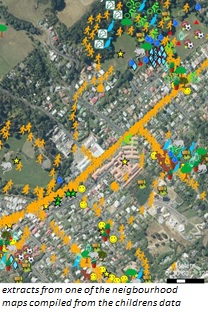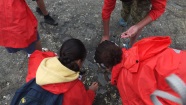 That children need nature for health and well-being is widely accepted, but what type of nature? The assumption that children must interact with wild pristine nature has been used to justify recognition of a 'nature deficit disorder' when such contact is lacking. However, recent research shows many urban areas support high biodiversity.
That children need nature for health and well-being is widely accepted, but what type of nature? The assumption that children must interact with wild pristine nature has been used to justify recognition of a 'nature deficit disorder' when such contact is lacking. However, recent research shows many urban areas support high biodiversity.
Children may not suffer from a lack of connection with nature because they interact with nature in their neighbourhood, and even if social or cultural norms frustrate this access, here may still be sufficient diversity within their immediate nearby environment.
We argue that the premise of an epidemic of 'nature deficit disorder' for children in western society is accepted uncritically and is adult-determined. By evaluating children's reported nature interactions and biodiversity within self-defined neighbourhood nature maps, we explore nature contexts. This research has produced a child centred biodiversity assessment, definition, and view of nature that will aid in better understanding the reality of children's lived experiences and how children can be best supported to develop and maintain connections with the natural world.
 We interviewed 187 children in Auckland, Wellington and Dunedin who provided drawn maps, were interviewed and produced a personalised computer map based on air photos. For each child there was also a biological assessment of the biodiversity present in their home range and close to their homes. Findings suggest children connect with local nature in diverse and innovative ways. All children have bio-diverse areas available in their neighbourhoods. Relatively few children can access all or even most of this biodiversity. However, within the areas that they can access the children show strong desires to connect with nature.
We interviewed 187 children in Auckland, Wellington and Dunedin who provided drawn maps, were interviewed and produced a personalised computer map based on air photos. For each child there was also a biological assessment of the biodiversity present in their home range and close to their homes. Findings suggest children connect with local nature in diverse and innovative ways. All children have bio-diverse areas available in their neighbourhoods. Relatively few children can access all or even most of this biodiversity. However, within the areas that they can access the children show strong desires to connect with nature.
Report available on request: Natural Neighbourhoods for City Children. 2015
Publications
Freeman, C., Stein, A., van Heezik, Y. 2017 (advance on line) City Children's Nature Knowledge and Contact: It Is Not Just About Biodiversity Provision, Environment and Behaviours. doi.org/10.117/0013916517732108.
Hand, K.I., Freeman, C., Seddon, P.J., Recio, M.R., Stein, A., van Heezik, Y. (2017) The importance of urban gardens in supporting children's biophilia. Proceedings of the National Academy of Sciences PNAS. 14:2, 274-279.
Freeman, C., van Heezik, Y., Stein, A., and Hand, K. 2016. Technological inroads into understanding city children's natural life-worlds, Children's Geographies, 14:2, 158-174.
